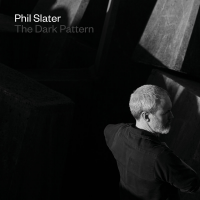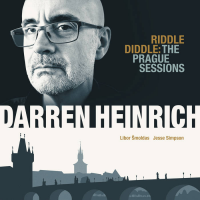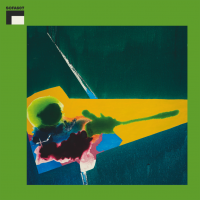Home » Jazz Articles » Album Review » Phil Slater: The Dark Pattern
Phil Slater: The Dark Pattern
The quietness of the compositions, presented over a span of two hours, is deceiving, for an underlying boiling notion emerges in different shapes and colors between the rather minimal interplay at hand. The piano mainly relies on single note, single interval as well as triad patterns throughout, and only rarely guides the music in a melodic way. In combination with the sparse drum work of a tom hit here and a snare accent there, the rhythmic framework for Slater is often dry to the bone, letting him soar in isolation. Only little contemplation can be traced in the trumpet's tone and vocabulary; it rather diffuses a searching notion, based on the curiousness of what may lie around the bend. A sense of frustration can be found in the climactic sections, where a motif will appear in multiple repetitions and at growing speed, as demonstrated towards the last third of "Opal" or half way through "Glow," which features one of the solo highlights on the record.
At just over two hours, The Dark Pattern is certainly no easy listen, especially considering the few changes in pace, atmosphere as well as general compositional approach the nine lengthy compositions display. Not that none of those properties are present; "Third Bell" is based on a trickling dissonance-rich melody played on piano which merges into a play with intervals—reminiscent of twelve-tone music. Slater introduces seductive lines on trumpet before the band makes an abrupt cut and starts afresh, led by a straight drum beat and constant eights on bass. The closing section is made up of a melancholic crescendo. Midway through "The Promise," the band is at its most explosive and sees the trumpet twirl and swirl to a funky groove which relies on a steady snare and bass drum beat, underlined by poignant double bass plucking.
Still, the general tone and sound of this acoustic ensemble remain more or less unaltered throughout. The attention to detail of the reverberation of the room and the distribution of the different frequencies, combined with the careful employment of each musician's voice, recalls the aesthetic often found on the ECM label. Extensive elaboration, however, allows the musicians to delve even deeper into introspection and realize the different impressions to completion—no censorship, no trimming and not a single try to please anything or anyone other than their own conversations.
The Dark Pattern gives the listener a chance to really sink into the depths of a thick and hazy atmosphere. With some patience and by keeping to the different trails blazed through the thicket by trumpet and saxophone, one is able to navigate through the clouds and come out a little brighter on the other side. A marvel to experience.
Track Listing
Mnemosyne; The Dilemma Throw; Glow; Opal; Third Bell; The Promise; The Monument; Cloud Hidden; The Golden Seam; Seven; The Dark Pattern.
Personnel
Phil Slater
trumpetPhil Slater: trumpet; Matt Keegan: saxophone; Matt McMahon: piano; Brett Hirst: bass; Simon Barker: drums.
Album information
Title: The Dark Pattern | Year Released: 2019 | Record Label: Earshift Music
Tags
PREVIOUS / NEXT
Support All About Jazz
 All About Jazz has been a pillar of jazz since 1995, championing it as an art form and, more importantly, supporting the musicians who make it. Our enduring commitment has made "AAJ" one of the most culturally important websites of its kind, read by hundreds of thousands of fans, musicians and industry figures every month.
All About Jazz has been a pillar of jazz since 1995, championing it as an art form and, more importantly, supporting the musicians who make it. Our enduring commitment has made "AAJ" one of the most culturally important websites of its kind, read by hundreds of thousands of fans, musicians and industry figures every month.



















